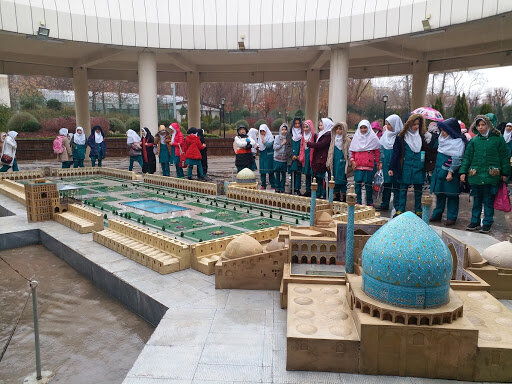One-stop: see Iran attractions like never before

If you are in Tehran and desire to get to know the cultural resources of the country at a glance, the Miniature Garden Museum is the right place for you to roam through.
Spanning 2.9 hectares in area, the park is home to replicas of the most important historical landmarks and landscapes including giant models of some UNESCO World Heritage sites.
Miniature maquettes of other UNESCO-registered sites will be constructed in the future, according to the Tehran Municipality website.
There are some eighty species of floras and plants that are endemic in the country, and a permanent photo gallery showing a variety of real shots of the World Heritage sites.
One of the key characteristics of the ensemble is that its replica models have entirely been designed and constructed by domestic sculptors and artists, according to executives.
The replicas are at one twenty-fifth of their original size. One of the complex’s highlights is probably the 17th-century Naghsh-e Jahan (Imam) Square that itself is composed of the Royal Mosque, the Ali Qapu Palace, the Mosque of Sheykh Lotfollah, the magnificent Portico of Qaysariyyeh, and a 15th-century Timurid palace all linked by a series of two-storied arcades.
The park also features copies of the Armenian Monastic Ensembles in the north-west of the country; Bam and its Cultural Landscape, and ancient mudbrick fortress in the south-east; magnificent ruins of Persepolis that was the capital of the mighty Achaemenid Empire in southern Iran; Tchogha Zanbil, a prehistoric Elamite ziggurat in the southwest; and Pasargadae which was the first dynastic capital of the Achaemenid Empire, founded by Cyrus II the Great.
The sites include Gonbad-e Qabus, the one-millennium-old brick tower in the north; Jameh Mosque in Isfahan; the 18th-century Golestan Palace in downtown Tehran; rock-carved dwellings with the Cultural Landscape of Maymand at the southern extremity of Iran’s central mountains; and several of famous Persian gardens scatted across the country.
It sometimes plays host to occasional sales exhibitions dedicated to breadwinner women to showcase their handicrafts such as handmade shoes and clothing, embroidery, and traditional jewelry.
The Miniature Garden Park opened its doors to the public in 2014. It is situated in district 8 of Tehran, sandwiched between West Janbazan St. in the south, Kerman St. in the west, and Imam Ali Hwy. in the east.
The miniature park is regularly visited by tour groups of schoolchildren, students, families, and domestic sightseers and it’s also a destination for foreign travelers more or less. It is a must-see for people who are not able to traverse the country on tours of these heritage sites.
AFM/
